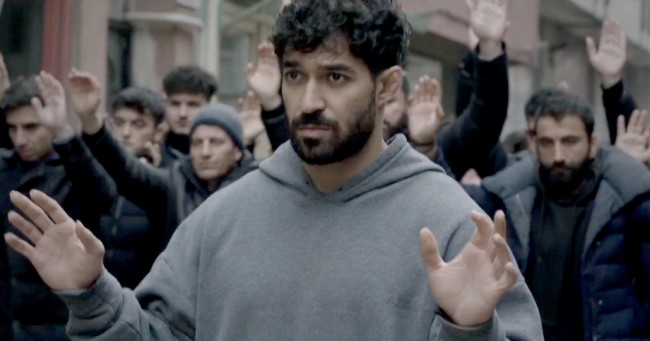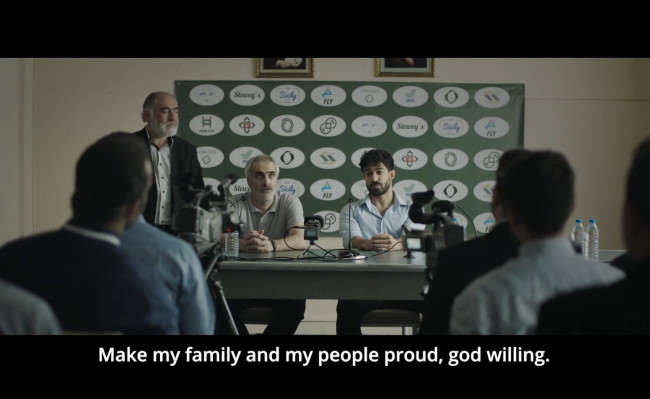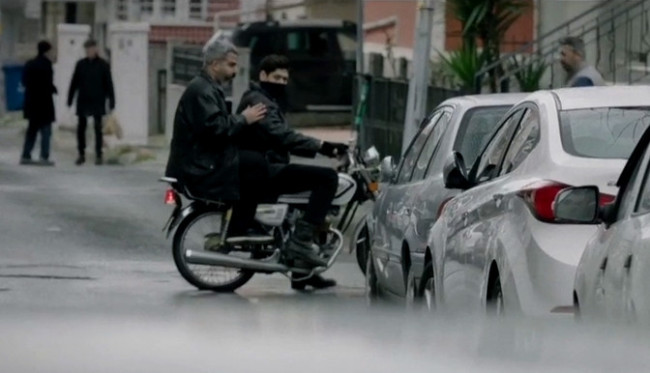A good day will come – a film dedicated to the memory of Navid Afkari
democracy and Iran
Iran is not a democratic country. Democracy hasn't been established there. But even countries that have democracy can be very problematic, to say just the very least. In 1970 the army (National Guard) opened fire at students in the campus of Kent State University. Other Americans, however, took writing history in their hands and continued with their revolutionary movements that had started out in the early '60s. So, most American citizens, since then, have had very good life in their democratic country, even though democratic only means democratic to an extent.
 still image from the film – © Zargara Productions
still image from the film – © Zargara Productions
Citizens of Iran are less fortunate, by far. Yet, progressive people do exist there, too. They talk among themselves, they discuss the situation on a daily basis, and they seek ways to change their country's fate. This is not as easy, by far, as it would be in the West. For example, people in Iranian cities have to witness, time after time, public executions (like in China). Once you have seen such a horrible event, you'll have a drastically different mindset, and will relate to anything that's forbidden in a completely different way. Fear, I’m talking about.
Still, in Iran, people talk among themselves, discuss the situation, and they organize protests, and attend those events.
Remember Neda Agah-Soltan? They young girl who went to a demonstration with her music teacher, and got shot in the chest and died on the spot? That was Iran, too. That was a demonstration – a protest, as thy call it. One of the many.
the wrestler champion's story
In this film, protests play the main role. The main character is an Iranian guy, a sportsman. He wins a wrestling championship somewhere in the West, away from home, very far. We often see that sportsmen who bring glory to their motherland live in a different world then their fellow citizens back at home. Sportsmen live the life of a privileged class.
Our wrestler champion doesn't. With his team, he watches news on a phone screen about the latest protests and killings back in Iran. He wins the golden medal, but before stepping in the circle to be announced as the champion, he takes on a T-shirt with the name and birth- and death years of a person who was at a protest, and got killed. That T-shirt says: "Mitra Jafari 1993 - 2018".
That he did this, was a miracle. He stood up when he couldn’t be expected to. He also makes it clear at a press conference, that he cares about what happens at home, in Iran. That was the second miracle he made.
 still image from the film – © Zargara Productions
still image from the film – © Zargara Productions
The journalist who asked him that question about how he felt about what was happening back in Iran, said farewell to him adding “see you at the protests”. And what we see is exactly that. Our champion is at a protest.
A protest in Iran means a totally different thing than a demonstration in the West. It means troops facing the protesters with their weapons “locked and loaded” (i.e. loaded and unlocked), ready to shoot, ready to kill. This is horrible enough, but this film goes far beyond just the basic facts. This film is an analysis of the warfare between the government and the people.
We see that protesters can get killed anytime, at any moment. But we see even more than that. We see that the army troops are sort of doing their job. Sort of! Point a gun at fellow citizens is intolerable, it is madness. But still, as an army, they will only kill when they have a reason to do that.
This analysis is amazing. We see the ultimately tense situation, see the muzzles of the firearms, and see the people, the protesters. We understand that the army needs an excuse to kill. Something. And we see 3-4 people, one of them masking his face with a black scarf, preparing molotov cocktails. Our hero goes there and tells them to stop it. They do. Then he goes to the first line of the protesters, facing the loaded weapons, and tells the commander they are peaceful. And the protesters holding their hands up, meaning they re peaceful, can go by, go on, get out of that narrow street, where they might have been massacred. This was our symbolic Navid Afkari’s 3rd miracle.
We see a bunch of guys on motorbikes leave the spot. We sense that something is not over yet.
Unlike Neda Agha-Soltan, Navid Afkari didn't die at a protest. The story of the film goes on. He gets arrested, gets accused of ridiculous charges, that he killed a secret agent, blah-blah-blah: clear-cut bullshit. Then he gets tortured, he confesses some things and he gets executed. And that’s it.
This film is fiction, sure. We don't see Navid Afkari. But we see the hero-prototype, which he had created, and which he actually was, himself.
the sociographic value of this film is amazing
The reason why this film is beautiful and exceptional is that it makes you understand some things. You’ll understand that the government wants blood and terror. Every time the troops kill, people experience terror, which could make them fear. The government works like a terrorist army: stirring fear every day. When our fictional Navid gets arrested, we also see the government’s motorbiker agents. It is clear that he gets this because he prevented the bloodshed at the last protest. They wanted him dead because he made a miracle, again – the third one in a row.
This makes us understand that the people of Iran are trapped. They can’t make a move without being watched, and they can get killed or arrested – or arrested and killed – at any moment. One can become a leader… a hero – for one day. Then he will be a martyr. It is like a garden in a prison yard, with leaves of grasses: whenever one stands out, it gets mowed.
 still image from the film – © Zargara Productions
still image from the film – © Zargara Productions
Navid Afkari was a wonderful a hero. A wonderful man. One of Iran’s finest people who cared much more about the country then his own life. He tried to change the situation the hard way: in the peaceful, non-violent way. Not in the traditional “man’s way” – Iran’s great handicap is women’s equality, cause like this, men fight against men, in men’s way, in which the “strongest”, aka the most violent wins. He confronted those men who wanted to ignite even more violence. Those men are men among them, belong to the community. This is why it is hard to stop them. Cause among men, the stronger dominates. Our “fictional” Navid was strong enough to stop them.
Navid Afkari was a hero. His name should be the symbol of the non-violent resistance, and the promise: a good day will come. Things can change anywhere. Even in the US, even in Europe, even in Iran. We should all keep this in mind, every day.

